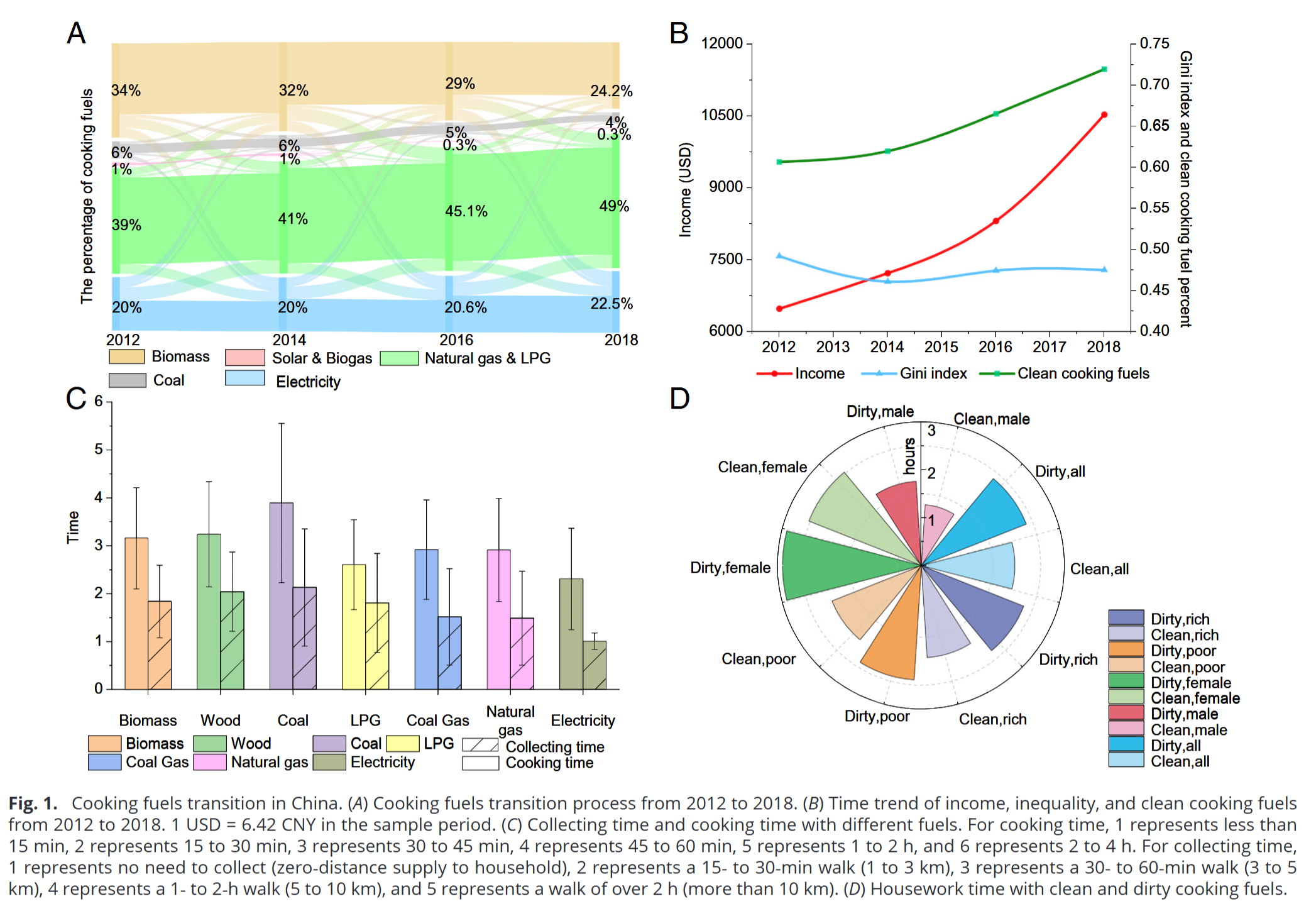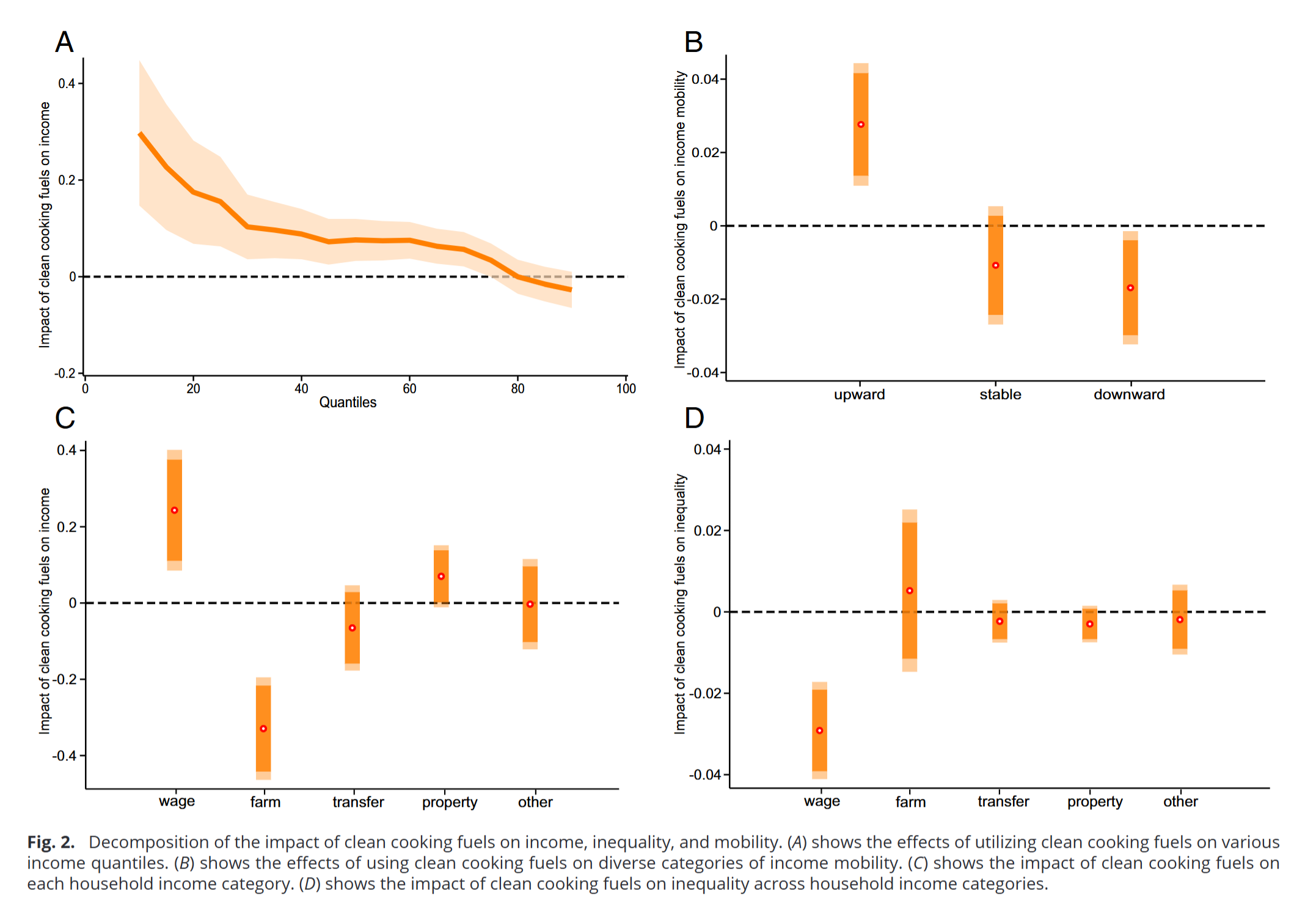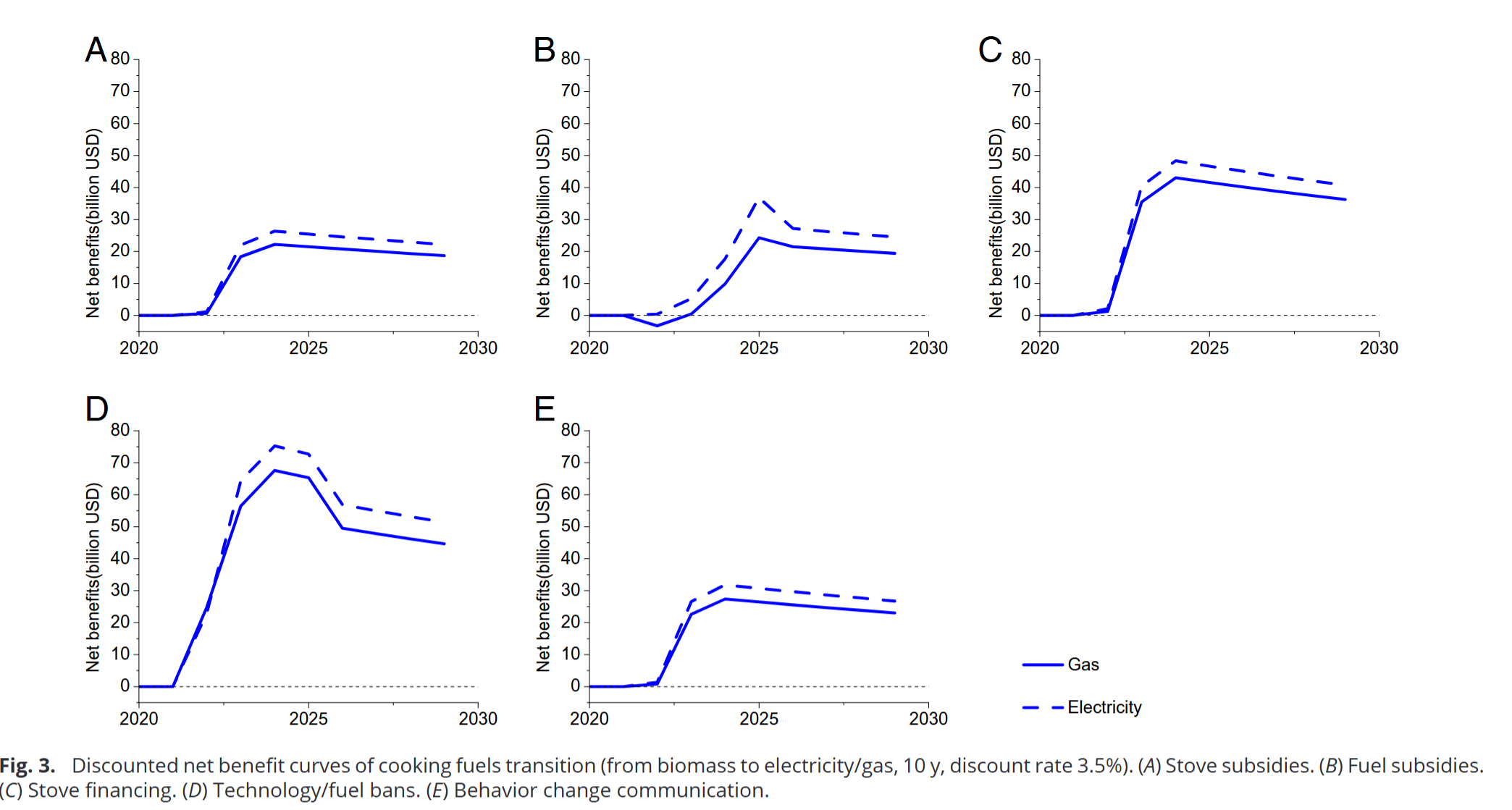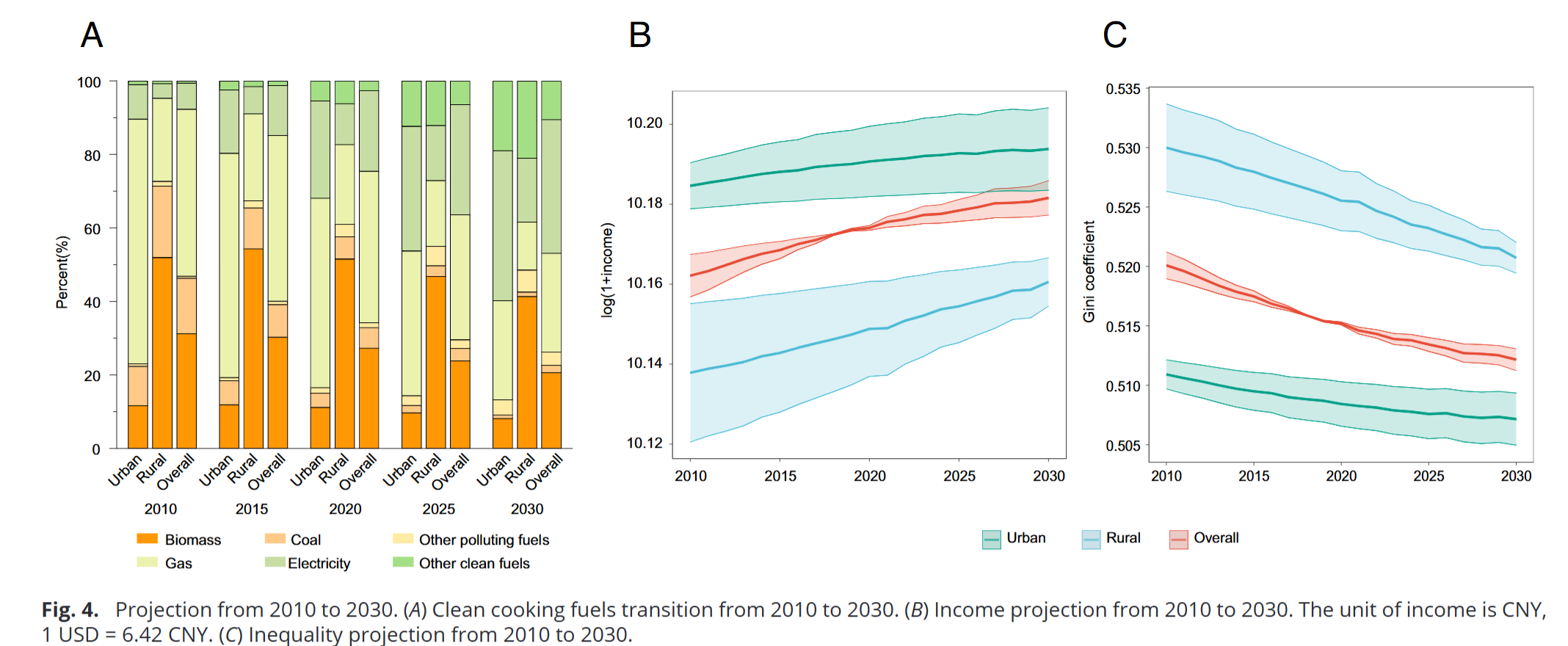Objective:
- Analyse the potential of clean cooking fuel transition in driving SDGs 1, 7 and 10
Case:
Methodology:
- Regression
- Robust
- introduce control
- IV
- endogeneity bias
- Rubin causal model
- Change definition
- Moderated regression
Data Source
- Survey: CFPS
- CHARLS
- CRECS
Findings:
- The prevalence rate of clean cooking fuels rose from 60% in 2012 to 72% in 2018

- Access to clean cooking fuels can increase household income and reduce income inequality

- Using clean cooking fuels significantly improved subjective health assessment and reduced the frequency of medical visits, the nunber of chronic diseases and the probability of lung disease


Coding Reference:




